In the remote wilderness of Western Australia, a landscape so extraordinary exists that it seems almost alien to our planet. The Bungle Bungles, with their distinctive orange and black striped domes, rise from the red earth like ancient sentinels guarding secrets from a time when the world was unrecognizable. These geological marvels have stood for hundreds of millions of years, yet they remain one of nature’s most puzzling creations. What forces could have sculpted such perfect, rounded formations with such precise banding patterns? The answer lies buried in deep time, where the story of our planet’s most mysterious rock formations begins.
The Discovery That Shocked the Scientific World

When European explorers first encountered the Bungle Bungles in the 1980s, they couldn’t believe their eyes. Here was a landscape that defied conventional geological understanding, with thousands of dome-shaped towers stretching across 450 square kilometers of the Kimberley region. The Aboriginal people of the area, particularly the Kija and Jaru peoples, had known about these formations for tens of thousands of years, calling them “Purnululu.”
The scientific community was stunned by the sheer scale and uniqueness of these structures. Unlike anything found elsewhere on Earth, the Bungle Bungles presented a geological puzzle that would take decades to begin solving. Their isolation had protected them from extensive study, making their “discovery” by the outside world remarkably recent in geological terms.
A Journey Through Deep Time

The story of the Bungle Bungles begins approximately 350 million years ago, during the Devonian period when the first forests were spreading across the continents. At this time, the area that would become the Bungle Bungles was part of a vast river system that deposited layer upon layer of sediment. These sediments, primarily composed of quartz sand and pebbles, would eventually form the foundation of these remarkable structures.
Over millions of years, these sedimentary deposits were compressed and cemented together, creating what geologists call the Bungle Bungle Formation. The process was slow and methodical, with each layer telling a story of ancient river systems, climate changes, and the gradual transformation of the landscape. This formation would later be uplifted and tilted, setting the stage for the unique erosional processes that would create the domes we see today.
The Mystery of the Striped Patterns

Perhaps the most striking feature of the Bungle Bungles is their distinctive banding pattern, alternating between orange and dark gray or black stripes. These bands aren’t painted on or artificially created – they’re the result of different mineral compositions within the rock layers. The orange bands are rich in iron oxide, giving them their rusty appearance, while the darker bands contain cyanobacteria and other microorganisms that have created protective crusts over millions of years.
The precision of these bands is what makes them so remarkable. Each stripe represents a different period in the formation’s history, when varying conditions led to different mineral deposits. The consistency of the banding across thousands of domes suggests a highly organized and systematic process that operated over vast periods of time. Scientists continue to study these patterns to understand the ancient environmental conditions that created them.
The Enigma of Perfect Dome Formation
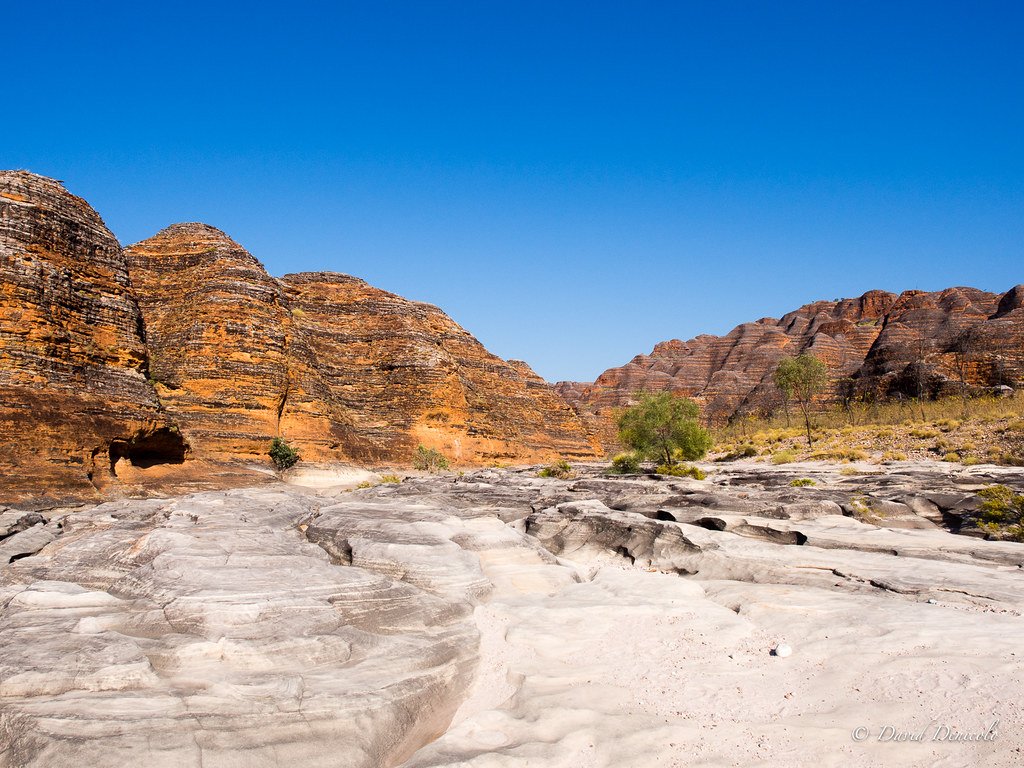
What makes the Bungle Bungles truly mysterious is how they achieved their characteristic dome shape. Unlike other rock formations that might be carved by wind and water into random shapes, these structures display an almost artificial uniformity. Thousands of domes, each with similar proportions and rounded tops, stretch across the landscape like a vast collection of stone beehives.
The formation process involves a complex interplay of geological forces that scientists are still working to understand. The underlying rock structure, combined with specific erosional patterns and the unique properties of the Bungle Bungle Formation, created conditions that favored the development of these dome shapes. It’s as if nature followed a blueprint that we’re only beginning to decipher.
The Role of Water in Shaping Ancient Landscapes

Water has been the primary architect of the Bungle Bungles, working tirelessly over millions of years to carve these formations. The process began when the region was uplifted and tilted, allowing water to flow along specific pathways determined by the rock’s internal structure. As water seeped into cracks and joints in the rock, it began the slow process of chemical and physical weathering that would eventually create the domes.
The unique properties of the Bungle Bungle Formation made it particularly susceptible to this type of erosion. The rock is relatively soft and porous, allowing water to penetrate deeply and work from within. Over time, this internal weathering created spherical zones of weakness that were preferentially eroded, gradually forming the dome shapes we see today. The process continues even now, with the domes slowly evolving and changing with each passing century.
Chemical Weathering and the Building of Mysterious Structures

The chemical processes that shaped the Bungle Bungles are fascinatingly complex and involve interactions between water, minerals, and organic matter that span geological time scales. As slightly acidic rainwater percolated through the rock layers, it dissolved certain minerals while leaving others intact. This selective dissolution created zones of varying strength within the rock mass, setting up the conditions for the eventual formation of the domes.
Iron minerals within the rock underwent oxidation, creating the characteristic orange coloration while also affecting the rock’s structural properties. Meanwhile, biological processes involving cyanobacteria and other microorganisms created protective layers that influenced erosion patterns. These combined chemical and biological processes worked together in ways that scientists are still investigating, creating a natural laboratory for understanding how life and geology interact over vast time periods.
The Biological Builders Nobody Expected
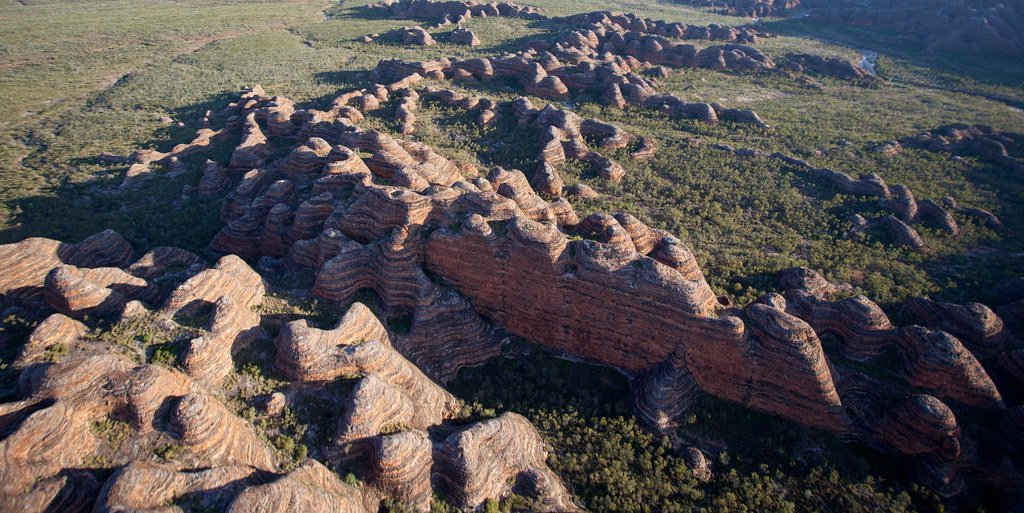
One of the most surprising discoveries about the Bungle Bungles is the significant role that microorganisms have played in their formation. The dark bands that create the distinctive striped pattern aren’t just mineral deposits – they’re living biological systems that have been active for millions of years. Cyanobacteria, along with other microorganisms, have created what scientists call “biofilms” on the rock surfaces.
These microscopic builders have essentially created armor plating for the rock, protecting certain areas from erosion while allowing others to wear away more quickly. The result is a complex interplay between biological and geological processes that has contributed to the unique appearance and structure of the domes. It’s a reminder that life and geology are more intertwined than we often realize, with tiny organisms playing crucial roles in shaping massive landscape features.
Climate Change Across Deep Time

The Bungle Bungles serve as a record of climate change across hundreds of millions of years, with each layer telling a story of different environmental conditions. During their formation, the region experienced everything from tropical river systems to arid desert conditions. These changing climates influenced the types of sediments deposited, the chemical processes at work, and the biological communities that contributed to the formation’s development.
Understanding these ancient climate changes helps scientists piece together not only the story of the Bungle Bungles but also the broader history of our planet’s changing environments. The formations provide insights into how landscapes respond to major climate shifts over geological time scales, offering valuable perspectives on current environmental changes. Each dome essentially contains a library of climate information spanning hundreds of millions of years.
The Puzzle of Uniform Erosion Patterns

One of the most perplexing aspects of the Bungle Bungles is how they achieved such uniform erosion patterns across thousands of individual domes. In most landscapes, erosion creates highly variable and irregular features, but the Bungle Bungles display an almost mathematical precision in their forms. This uniformity suggests that the underlying geological processes were remarkably consistent across the entire formation.
The answer may lie in the unique properties of the rock itself and the specific conditions under which erosion occurred. The Bungle Bungle Formation has very consistent composition and structure, which may have led to predictable erosion patterns. Additionally, the region’s climate and hydrological conditions may have remained relatively stable over the critical periods when the domes were forming, allowing similar processes to operate across the entire landscape.
Hidden Chambers and Internal Mysteries
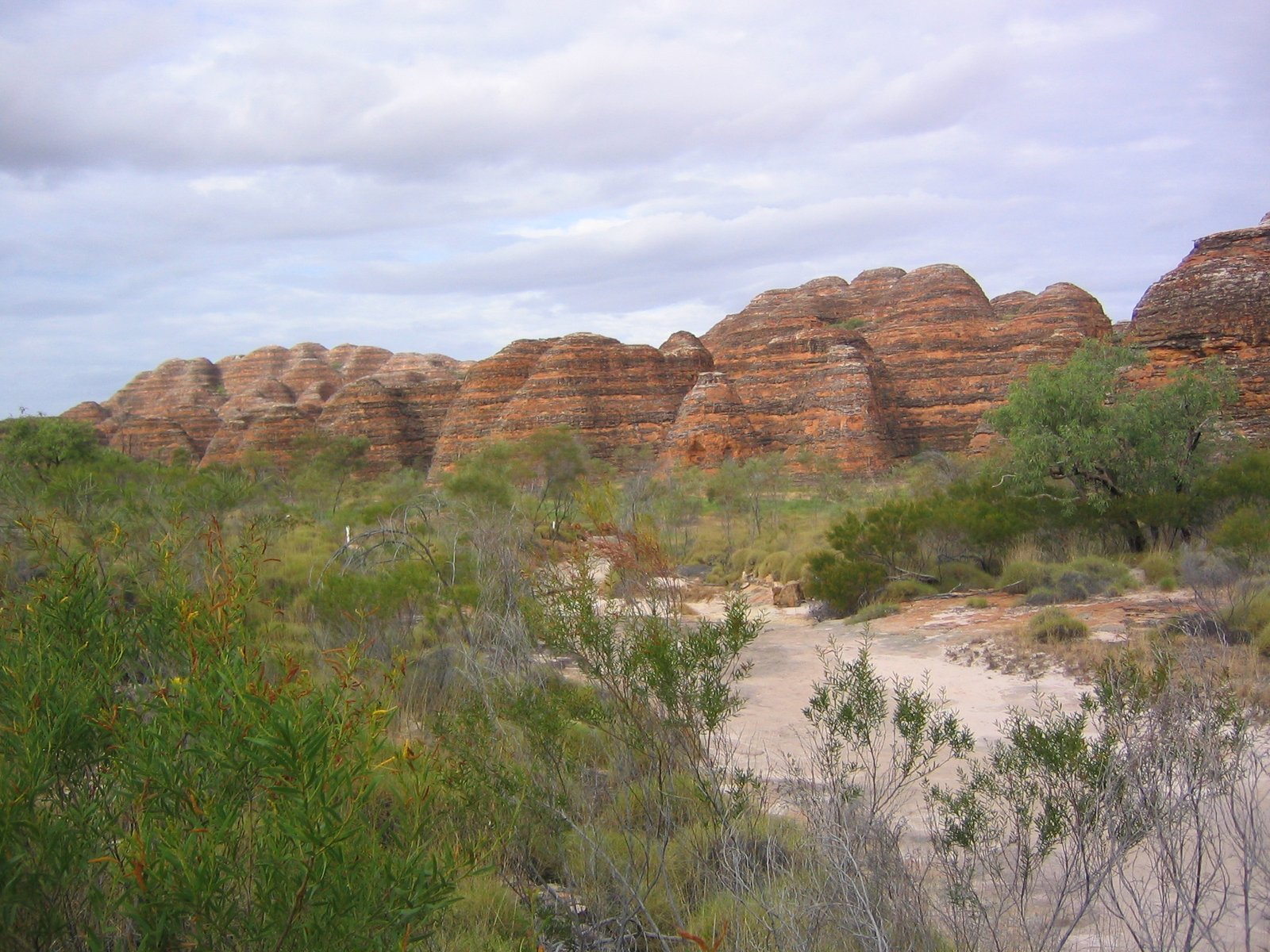
Recent investigations have revealed that the Bungle Bungles contain complex internal structures that aren’t visible from the surface. Using ground-penetrating radar and other advanced techniques, scientists have discovered networks of chambers, tunnels, and void spaces within the domes. These hidden features suggest that the formation process was even more complex than previously thought, with internal weathering creating intricate three-dimensional structures.
Some of these internal chambers are large enough to walk through, creating a hidden world within the domes that few people have ever seen. The existence of these features raises new questions about how the domes formed and evolved over time. They also suggest that the Bungle Bungles may be even more geologically active than previously believed, with ongoing processes continuing to shape their internal structure.
The Great Tilting Event
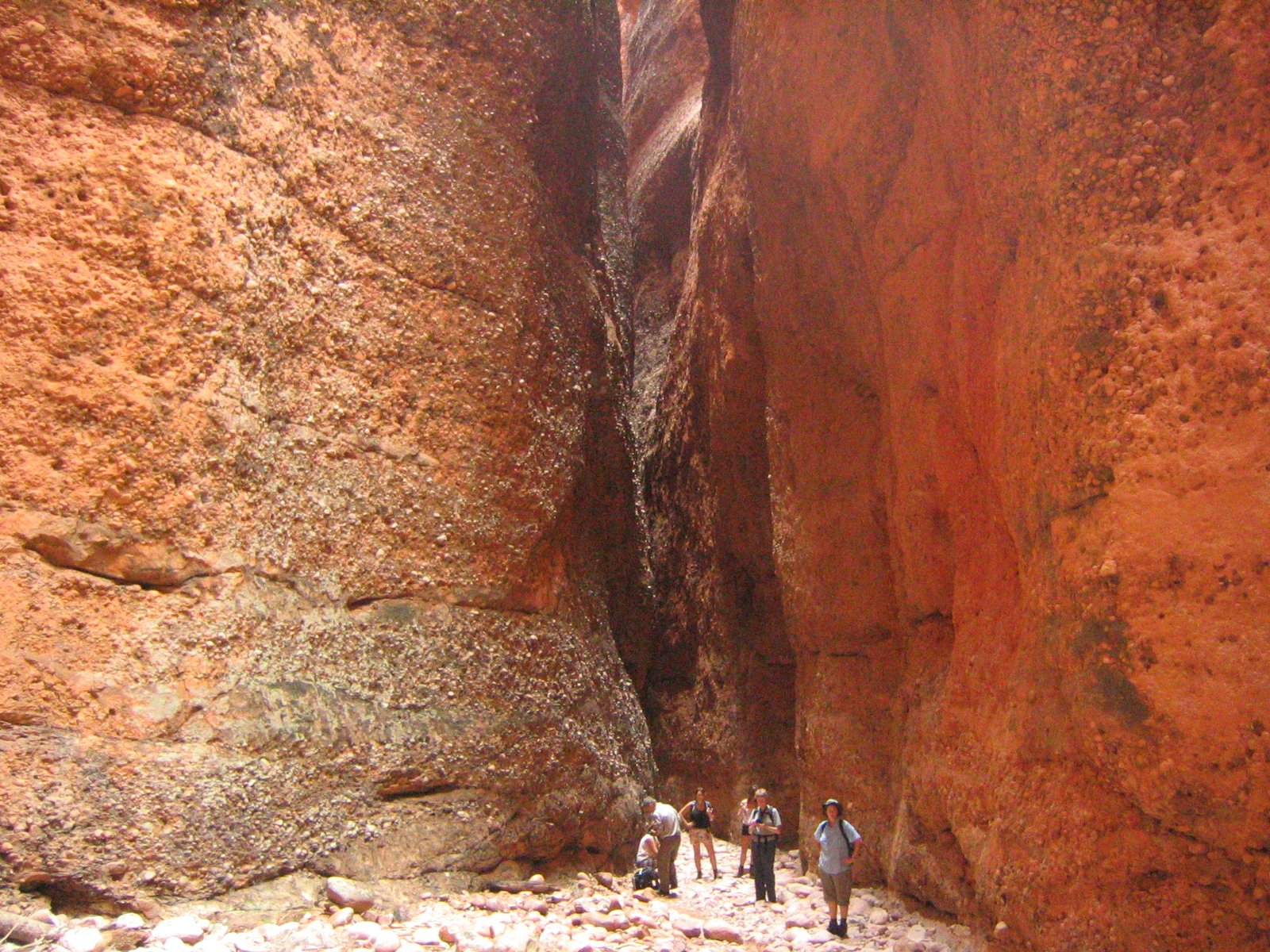
A crucial moment in the Bungle Bungles’ history occurred when the entire formation was tilted at an angle of about 15 degrees. This tilting event, which happened millions of years ago, fundamentally changed how water flowed across the landscape and set up the conditions for dome formation. Before the tilting, the rock layers were horizontal, but afterward, they were oriented in a way that created preferential flow paths for water.
The tilting also exposed different layers of the formation to surface weathering, creating the complex interaction of processes that led to the distinctive banding patterns. This event essentially activated the formation, transforming it from a static geological feature into a dynamic landscape that would be sculpted by erosion over millions of years. Understanding this tilting event is key to comprehending how the Bungle Bungles achieved their unique characteristics.
Comparing Earth’s Most Unusual Formations

When geologists compare the Bungle Bungles to other rock formations around the world, they find few true analogs. While there are other areas with unusual erosional features, the combination of dome shapes, striped patterns, and massive scale found in the Bungle Bungles is virtually unique. Some formations in Utah and Arizona share certain characteristics, but none match the complete package of features found in Western Australia.
This uniqueness makes the Bungle Bungles particularly valuable for understanding geological processes. They represent an extreme example of how specific conditions can create extraordinary landscapes, providing insights that can’t be gained from studying more common geological features. Their rarity also makes them scientifically precious, as they offer a window into processes that rarely occur elsewhere on Earth.
The Technology Revolution in Geological Detection

Modern technology has revolutionized our ability to study the Bungle Bungles, revealing secrets that were hidden for millions of years. Satellite imagery, LIDAR scanning, and ground-penetrating radar have allowed scientists to map the formations in unprecedented detail. These tools have revealed patterns and structures that weren’t visible to earlier researchers, opening new avenues for understanding how the domes formed.
Advanced chemical analysis techniques have also provided new insights into the formation’s composition and history. By analyzing tiny samples of rock and mineral deposits, scientists can now reconstruct the environmental conditions that existed millions of years ago. This technological revolution has transformed the Bungle Bungles from a geological curiosity into a detailed record of Earth’s ancient past.
Ancient Ecosystems Preserved in Stone
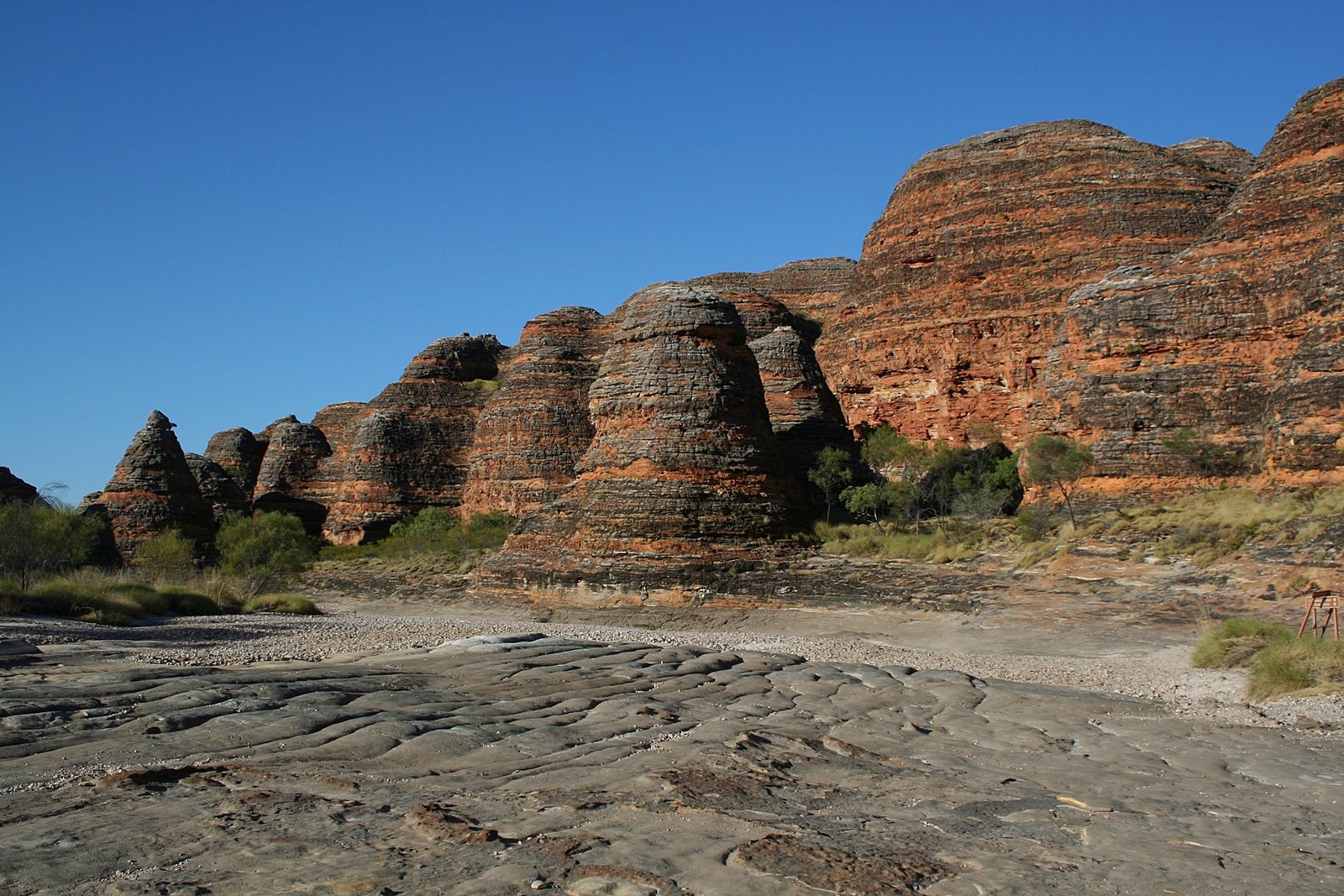
The Bungle Bungles contain fossilized remnants of ancient ecosystems that provide glimpses into life on Earth hundreds of millions of years ago. While large fossils are rare, the formations preserve microscopic evidence of ancient bacteria, algae, and other organisms that lived in the river systems that deposited the original sediments. These microscopic fossils help scientists understand how life evolved and adapted to changing environmental conditions.
The preserved biological material also provides insights into the relationship between life and geology over vast time scales. The cyanobacteria that created the dark bands in the rock are descendants of some of Earth’s earliest life forms, and their continued presence in the formations creates a direct link to the planet’s biological past. This connection between ancient and modern life adds another layer of mystery to the Bungle Bungles’ story.
Current Theories and Scientific Debates

Despite decades of research, scientists continue to debate the exact mechanisms that created the Bungle Bungles. Several competing theories attempt to explain their formation, each supported by different lines of evidence. Some researchers emphasize the role of groundwater flow and chemical weathering, while others focus on the importance of biological processes and surface erosion.
The debate reflects the complexity of the formation process and the challenges of studying events that occurred over such vast time scales. New discoveries continue to refine our understanding, but they also raise new questions that require further investigation. This ongoing scientific dialogue ensures that the Bungle Bungles remain at the forefront of geological research, continuing to challenge our understanding of how landscapes form and evolve.
The Future of These Ancient Monuments

The Bungle Bungles continue to evolve today, albeit at a pace that’s imperceptible to human timescales. Ongoing erosion processes are slowly reshaping the domes, while biological activity continues to influence their appearance and structure. Climate change may accelerate some of these processes, potentially altering the formations in ways that could affect their long-term preservation.
Scientists are working to understand how current environmental changes might impact the Bungle Bungles’ future evolution. This research has implications not only for preserving these remarkable formations but also for understanding how landscapes respond to rapid environmental change. The Bungle Bungles serve as a natural laboratory for studying these processes, providing insights that may help us better understand and manage other geological treasures around the world.
Protecting Earth’s Geological Mysteries
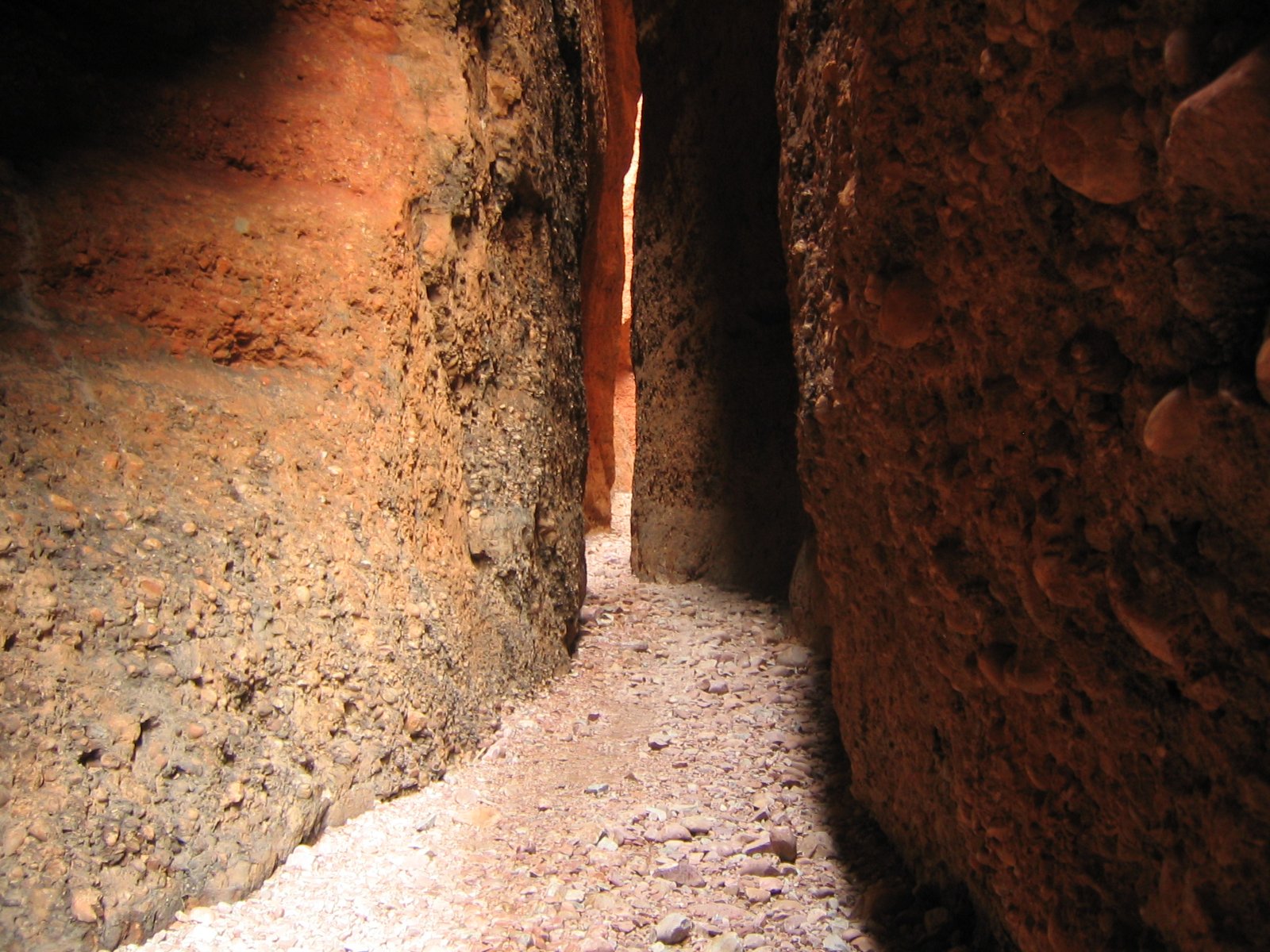
The Bungle Bungles’ designation as a UNESCO World Heritage site recognizes their outstanding universal value and the need to protect them for future generations. However, protecting geological formations presents unique challenges, as they’re subject to ongoing natural processes that can’t be stopped or controlled. The goal is to minimize human impacts while allowing natural processes to continue.
Conservation efforts focus on managing visitor access, preventing erosion from foot traffic, and protecting the delicate biological communities that continue to play roles in the formations’ evolution. Research continues to inform these conservation strategies, helping managers understand how to balance protection with scientific study and public access. The Bungle Bungles remind us that some of Earth’s most precious treasures are also its most vulnerable, requiring careful stewardship to ensure their survival.
Standing before these ancient domes, one can’t help but feel humbled by the vast scales of time and process that created them. The Bungle Bungles represent more than just a geological curiosity – they’re a testament to the power of slow, persistent forces working over unimaginable periods. Their story challenges us to think beyond human timescales and consider the deep processes that shape our planet. As we continue to unravel their mysteries, these 350-million-year-old monuments remind us that Earth still holds secrets waiting to be discovered. What other geological puzzles might be hiding in plain sight, waiting for the right combination of curiosity, technology, and time to reveal their secrets?




